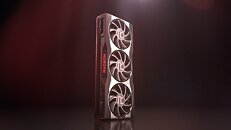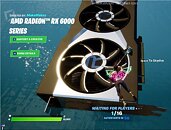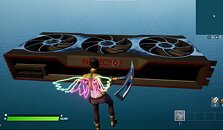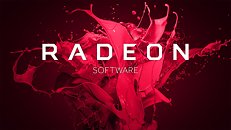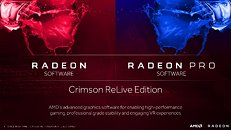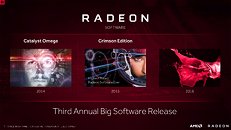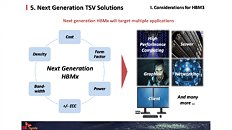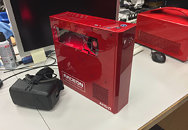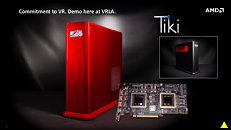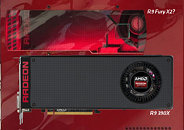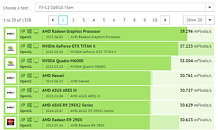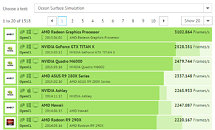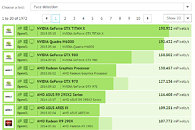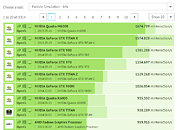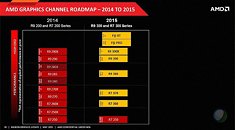
AMD Radeon RX 6000 "Big Navi" RDNA2 Reference Design Pictured
AMD revealed its Radeon RX 6000 series graphics card reference design. This card will likely be AMD's flagship product based on its RDNA2 graphics architecture. The card features a refreshing new dual-slot, triple axial fan cooling solution that uses large new high-airflow fans that have webbed impellers, and an aluminium fin-stack heatsink that spans the entire length of this roughly-30 cm long card. A variation of the insert with the Radeon branding was teased last year. This is AMD's second reference design with triple axial fans, after the Radeon VII.
The card features two 8-pin PCIe power inputs right where you expect them. Display outputs include a pair of DisplayPorts, an HDMI, and a USB type-C. Since air exhaust is guided out of the top of the card with its fin-stack arrangement (and none from the rear I/O), AMD has a sealed I/O shield like the Radeon Fury. AMD partnered with Epic Games for a Fortnite treasure-hunt map that lets you see a 3D model of the card in from more angles. We'll spare you the treasure hunt with a video by Anshel Sag.The Fortnite video follows.
The card features two 8-pin PCIe power inputs right where you expect them. Display outputs include a pair of DisplayPorts, an HDMI, and a USB type-C. Since air exhaust is guided out of the top of the card with its fin-stack arrangement (and none from the rear I/O), AMD has a sealed I/O shield like the Radeon Fury. AMD partnered with Epic Games for a Fortnite treasure-hunt map that lets you see a 3D model of the card in from more angles. We'll spare you the treasure hunt with a video by Anshel Sag.The Fortnite video follows.
